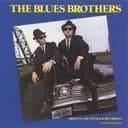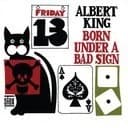The F♯ Blues Scale maintains all the historical and theoretical significance of the blues tradition while operating in a key that offers distinct sonic characteristics. The scale's "blue note"—C natural (♭5)—creates a tritone against the root F♯, producing the same dissonant tension that defines blues music across all keys. In practice, blues musicians bend this note fluidly between B (perfect 4th) and C♯ (perfect 5th), creating microtonal variations that cannot be precisely notated in standard Western musical notation. This pitch ambiguity reflects African musical traditions where notes exist on a continuum rather than fixed positions, a concept that enslaved people and their descendants preserved when adapting to European instruments and harmonic systems. On guitar, F♯ blues patterns fall naturally under the fingers in open and second position, making it a favorite key for rock and blues guitarists. The scale's enharmonic relationship to G♭ blues means the same pitch collection can be conceptualized differently depending on harmonic context, with F♯ being more common in sharp-oriented keys and G♭ in flat-oriented ones.
How to Use the F♯ Blues Scale
The F♯ Blues Scale functions perfectly over standard blues progressions, particularly the 12-bar blues form in F♯ (F♯7-B7-F♯7-C♯7-B7-F♯7). Like all blues scales, it works remarkably well across all three dominant seventh chords in the progression (I7-IV7-V7), providing a unified melodic vocabulary that beginning improvisers can apply without constantly changing scale positions. When soloing, emphasize the blue note (C natural) by approaching it chromatically from either B or C♯, then resolving to create the characteristic blues "cry" heard in iconic recordings. The scale excels in rock and blues contexts where F♯ minor tonality provides a darker, heavier sound than brighter keys. Experiment with rhythmic variations, shuffle feels, and call-and-response phrases to develop authentic blues vocabulary. The scale also adapts beautifully to funk, soul, and jazz improvisation over F♯7, F♯m7, or F♯9 chord vamps. For added harmonic color, combine the blues scale with F♯ Minor Pentatonic or F♯ Natural Minor, switching between them to create melodic contrast and sophistication.
Blues Scale vs Minor Pentatonic
The F♯ Blues Scale differs from the F♯ Minor Pentatonic Scale by exactly one note: the added blue note C natural (♭5). The F♯ Minor Pentatonic consists of F♯-A-B-C♯-E, while the blues scale inserts C natural between B and C♯, creating F♯-A-B-C-C♯-E. This single chromatic addition transforms the scale from the minor pentatonic's consonant, stable sound to the blues scale's more expressive, tension-filled character. Many blues and rock players use both scales interchangeably within the same solo, treating the ♭5 as an optional passing tone or deliberate target note for emotional emphasis. The blues scale essentially equals "minor pentatonic plus the blue note," making it simple to integrate into pentatonic-based improvisations. When practicing, establish comfort with the F♯ Minor Pentatonic framework first, then gradually incorporate the C natural, paying attention to how it creates and resolves harmonic tension. This approach helps develop the subtle control necessary for authentic blues phrasing.
Common Blues Progressions
The F♯ Blues Scale works perfectly over the classic 12-bar blues progression, the foundational form of blues music. In F♯, this progression follows: F♯7 (4 bars) - B7 (2 bars) - F♯7 (2 bars) - C♯7 (1 bar) - B7 (1 bar) - F♯7 (2 bars). The I-IV-V movement (F♯7-B7-C♯7) creates the tension-and-release cycle that defines blues harmony, and the blues scale navigates all three chords seamlessly since every scale degree relates harmonically to each dominant seventh chord. Beyond the standard 12-bar form, the blues scale adapts to one-chord vamps (F♯7 or F♯m7 grooves), quick-change variations (B7 in bar 2), and extended jazz-blues progressions incorporating ii-V-I turnarounds and substitute chords. When improvising, emphasize chord tones (F♯, A, C♯, E) on downbeats to create melodic lines that clearly outline the underlying harmony while using the blue note (C natural) for color and expression. The scale's effectiveness extends beyond traditional blues into rock, funk, soul, and contemporary music that draws from blues vocabulary.
Famous Applications and Artists
While F♯ blues may be less prominent than blues in C or E, this key has been utilized effectively by numerous legendary musicians. The blues scale's principles remain consistent across all keys—artists like B.B. King, Eric Clapton, and Stevie Ray Vaughan demonstrated mastery of blues scales in every position, including F♯. On guitar, F♯ blues positions offer comfortable access to expressive techniques like string bending, vibrato, and hammer-ons. Rock guitarists frequently explore F♯ blues when seeking darker, heavier tonal colors, particularly in hard rock and metal contexts where down-tuned guitars make F♯ more accessible. Jazz musicians working with blues forms transpose standards to various keys including F♯, applying blues scale vocabulary to modal and bebop contexts. Contemporary blues-rock players continue exploring all twelve keys democratically, recognizing that blues feeling transcends specific tonalities. Whether you're improvising over a classic 12-bar progression or incorporating blues inflections into rock and funk compositions, the F♯ Blues Scale provides the same expressive vocabulary that defines blues tradition, connecting your playing to decades of musical innovation and emotional authenticity.





